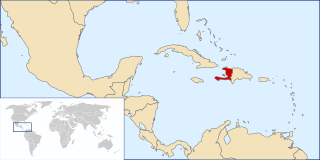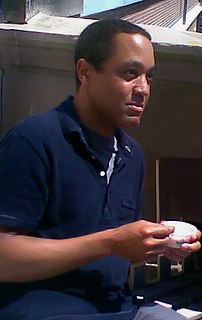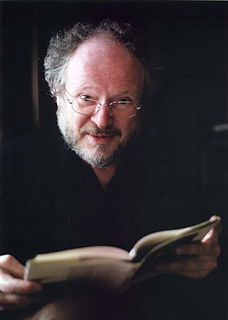Joual is an accepted name for the linguistic features of basilectal Quebec French that are associated with the French-speaking working class in Montreal which has become a symbol of national identity for some. Joual is stigmatized by some and celebrated by others. While joual is often considered a sociolect of the Québécois working class, many feel that perception is outdated.

Haitian Creole is a French-based creole language spoken by 10–12 million people worldwide, and the only language of most Haitians. It is called kreyòl ayisyen or just kreyòl by its speakers, and créole haïtien in Standard French.
Saramaccan is a creole language spoken by about 58,000 ethnic African people near the Saramacca and upper Suriname River, as well as in the capital Paramaribo, in Suriname, 25,000 in French Guiana, and 8,000 in the Netherlands. It has three main dialects. The speakers are mostly descendants of fugitive slaves who were native to West and Central Africa; they form a group called Saamacca, also spelled Saramaka.
Créolité is a literary movement first developed in the 1980s by the Martinican writers Patrick Chamoiseau, Jean Bernabé and Raphaël Confiant. They published Eloge de la créolité in 1989 as a response to the perceived inadequacies of the négritude movement. Créolité, or "creoleness", is a neologism which attempts to describe the cultural and linguistic heterogeneity of the Antilles and, more specifically, of the French Caribbean.
A French creole, or French-based creole language, is a creole language for which French is the lexifier. Most often this lexifier is not modern French but rather a 17th-century koiné of French from Paris, the French Atlantic harbors, and the nascent French colonies. French-based creole languages are spoken natively by millions of people worldwide, primarily in the Americas and on archipelagos throughout the Indian Ocean. This article also contains information on French pidgin languages, contact languages that lack native speakers.
The language bioprogram theory or language bioprogram hypothesis (LBH) is a theory arguing that the structural similarities between different creole languages cannot be solely attributed to their superstrate and substrate languages. As articulated mostly by Derek Bickerton, creolization occurs when the linguistic exposure of children in a community consists solely of a highly unstructured pidgin; these children use their innate language capacity to transform the pidgin, which characteristically has high syntactic variability, into a language with a highly structured grammar. As this capacity is universal, the grammars of these new languages have many similarities.
Canadian French is a variety of the French language spoken in Canada. It includes the varieties of French used in Canada such as Quebec French. Formerly Canadian French referred solely to Quebec French and the closely related varieties of Ontario (Franco-Ontarian) and Western Canada—in contrast with Acadian French, which is spoken in some areas of eastern Quebec, New Brunswick, and some areas of Nova Scotia. PEI and Newfoundland & Labrador have Newfoundland French.
Magoua, which may derive from a word in Algonquin: Makwa French: ours) which means bear, is a particular dialect of basilectal Quebec French spoken in the Trois-Rivières area, between Trois-Rivières and Maskinongé. Long before a military fort was constructed there, Trois-Rivières became in 1615 the first stronghold of the coureurs des bois outside the city of Québec. Magoua is the ethnonym applied to their descendants in the area. Magoua is the most conservative of all Quebec French varieties, including Joual. It preserves the sontaient ("étaient") characteristic of Métis French and Cajun French, has a creole-like past tense particle tà and has old present-tense contraction of a former verb "to be" that behave in the same manner as subject clitics.
Narreme is the basic unit of narrative structure. According to Helmut Bonheim (2000), the concept of narreme was developed three decades earlier by Eugene Dorfman and expanded by Henri Wittmann, The narreme is to narratology what the sememe is to semantics, the morpheme is to morphology and the phoneme to phonology. The narreme, however, has yet to be persuasively defined in practice. In interpretative narratology constrained in a framework of Principles and parameters, narration is the projection of a narreme N0, the abstract head of a narrative macrostructure where Nn dominates immediately Nn-1 (Wittmann 1995).
Métis French, along with Michif and Bungi, is one of the traditional languages of the Métis people, and the French-dialect source of Michif.
Bourbonnais Creole is a group of French-based creole languages spoken in the western Indian Ocean. The close relation of the languages is a consequence of the similar historical and cultural backgrounds of the islands. The name is derived from the former name of Réunion Island, which was called Bourbon Island prior to 1793. Another name is Mascarene Creole, derived from the main island group associated with these languages.
The French Sign Language (LSF) or Francosign family is a language family of sign languages which includes French Sign Language and American Sign Language.
Saint-Barthélemy French or St. Barts patois is the dialect of French spoken in the Caribbean, on the French-controlled island of Saint-Barthélemy and by a small emigrant community on Saint Thomas in the US Virgin Islands.
Robert Chaudenson is a French linguist, a specialist in creole languages and an emeritus professor of linguistics at the University of Provence. He's a widely known author on the subject of creolistics and president of the International Committee of Creoles Studies.

Mauritian Creole or Morisien or formerly Morisyen is a French-based creole language spoken in Mauritius. In addition to the French base of the language, there are also a number of words from English and from the many African and South Asian languages that have been spoken on the island.





